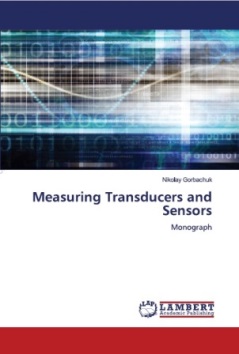Transducers, gauges, sensors - Information portal © 2011 - 2025 Use of material is possible by placing an active link
Manometers. Pressure gauge
Blood pressure measuring devices are called manometers. There are various designs of gauges that are used in a particular field of technology and solve the problem of determining the pressure in certain conditions.
Fairly widely applied spring pressure gauges, which are widely used in engineering and other fields.
In the spring gauges measure the pressure being measured is the elastic displacement of manometric spring passed to the movement.
Apply elastic membrane, tubular spring. Elastic elements gauge is usually made of brass, phosphor bronze, nickel silver, etc.
Bourdon tube pressure gauges have a variety of forms: tension springs (extension), compression springs, bending, torsion, corrugated tube, Bourdon tube, etc. The basis of the Bourdon tube is its oval section. Under the effect of supply pressure oval cross-section tends to form closer to the circle, the spring straightens up and its free end is moved. Moving the needle is passed.
With spring differential pressure gauge is determined - and the controlled atmosphere. Absolute pressure gauge spring can be measured by placing a bourdon tube in vacuum or use two Bourdon tube, in one of which a vacuum.
One of the basic errors of the spring are the temperature gauge. They arise due to changes in the elastic modulus of the material tube with temperature, thermal expansion.
Diaphragm pressure gauges. The principle of operation is based on measuring gauge strain bellows, which is loaded with one hand controlled pressure. The design shown in Fig.1. Accuracy class, they are usually 1.6.
In membrane manometers used corrugated membrane, because they have more movement, but they are difficult to transfer. Flat membranes are well designed, but the thin nonlinear, unstable, etc.
In gauges provides overload protection. At pressures exceeding the upper limit of the scale gauge membrane plane must rely on the security device, repeating the profile of the membrane manometer.
There diaphragm pressure gauges with electrical transmission. They are on the membrane can be bonded strain gauges or the membrane is made of a semiconductor material, which generated strain-sensing elements. This design allows the gauge to produce a particularly small size, with a diameter of the order of millimeter.
Fig.1. The design of the membrane manometer:
1 - bottom flange, 2 - nipples, 3 - membrane chamber, 4 - upper flange, 5 - membrane, 6 - connecting bolt, 7 - ball joint, 8 - draft, 9 - Segment 10 - teeth, 11 - Arrow , 12 - the dial
Home >> Force transducers and pressure >> Manometers. Pressure gauge

русский / english
• Information about various converters and sensors of physical quantities, parameters of various physical processes is presented.
• Electrophysical properties and effects in various electrical materials.
• Theory, experimental results, practical application
The pressure sensors. Instrumentation
The pressure sensor consists of a sensor module, a signal conversion sensor, the display and the housing.
Used to measure air pressure, oil, water, certain types of gas pressure in the tires of the car, etc. for Example, the oil pressure sensor - a device which monitors the amount of oil in the car. Described the absolute pressure sensors MIDA-DA-13P-Ex, MIDA-13P-YES. Designed for continuous transformation of the absolute pressure.
Site describes the different types of pressure sensors from relatively expensive pressure gauges to modern sensors with the electronic conversion of the output signal. Pressure sensors with analog output. Species the device whose principle of operation, principles of operation. Mechanical pressure sensors (differential pressure) direct measurement. The principle of operation of mechanical pressure sensors.
In ad units offers pressure sensors - buy, sell, order.

See also:
CONVERTERS, GAUGES, SENSORS
Information, news, advertising


